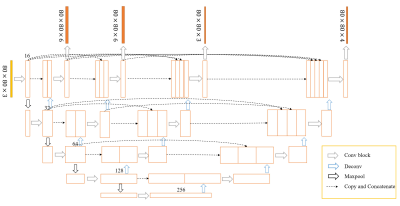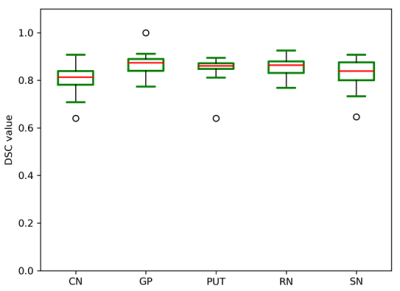Yida Wang1, Naying He2, Yan Li2, Yi Duan1, Ewart Mark Haacke2,3, Fuhua Yan2, and Guang Yang1
1East China Normal University, Shanghai Key Laboratory of Magnetic Resonance, Shanghai, China, 2Department of Radiology, Ruijin Hospital, Shanghai Jiao Tong University School of Medicine, Shanghai, China, 3Department of Biomedical Engineering, Wayne State University, Detroit, MI, United States
1East China Normal University, Shanghai Key Laboratory of Magnetic Resonance, Shanghai, China, 2Department of Radiology, Ruijin Hospital, Shanghai Jiao Tong University School of Medicine, Shanghai, China, 3Department of Biomedical Engineering, Wayne State University, Detroit, MI, United States
- A deep learning method was proposed to automatically segment brain nuclei including caudate nucleus, globus pallidus, putamen, red nucleus, and substantia nigra on QSM data. The trained network could accurately segment brain nuclei regions.


